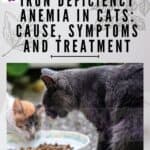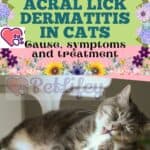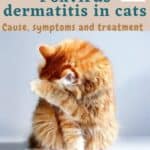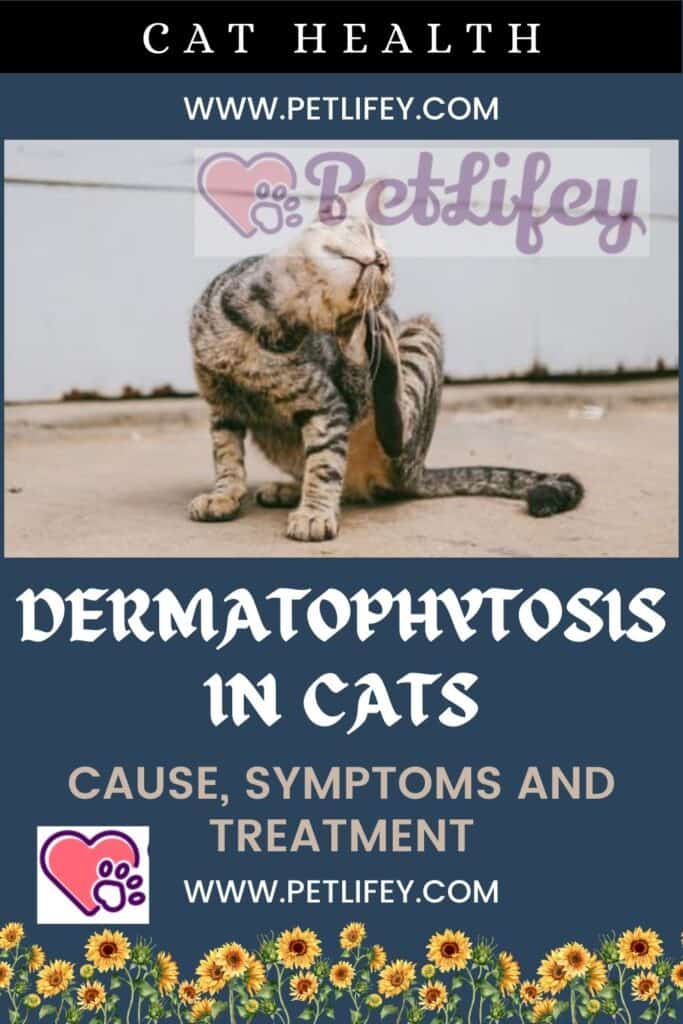
Dermatophytosis in cats is a disease that predominantly affects cats. Let’s see what the cause, symptoms and treatment.
Dermatophytosis in cats is a pathology that manifests itself mainly in poorly treated environmental conditions, the disease can be present or very frequent in a population or territory, and its elimination can be very tiring. Moreover, since it is a zoonosis, it can be transmitted to other animal species and to humans, in particular to children. This disease tends to spread mainly by direct contact with an infected animal.
The causes of dermatophytosis in cats
Dermatophytosis in cats also known by the name of ringworm, is a disease caused by the presence of dermatophytic fungi also known as keratinophilic and keratolytic pathogenic fungi. It is therefore a disease of fungal origin that affects for the most part the skin of the animal, facilitating the formation of skin patches and subsequently the loss of hair.
This fungus generates arthrospores (bacterial cell that increases in volume and becomes resistant to the action of external agents due to the loss of water or thickening of its membrane) that are removed through the cat’s hair that breaks or through the skin scales.
These spores can be easily transmitted by direct contact or with dust particles, blankets, linen, toys, brushes, clothes and remain contagious for about a year. There are unfortunately some subjects more at risk as they are predisposed to the disease, they are:
- cats that have skin traumatism (scratches, ectoparasites);
- puppies aged (< 2 years);
- cats in immunosuppression (for example, for social stress in overcrowded facilities);
- cats living at high ambient temperatures and high humidity;
- cats with nutritional deficits.
Other cats, especially adult ones, are asymptomatic carriers of M. canis. This is why all cats present in catteries and shelters, even asymptomatic ones, should be treated and care should be taken to proceed with the thorough cleaning of the surrounding environment to be sure of having decontaminated.
Symptoms
Dermatophytosis in cats manifests itself through very obvious and typical symptoms, they can hardly be confused with pathological signs of other diseases. They consist of:
- alopecia, which is the characterizing lesion, slightly itchy, so the cat is annoyed to be touched.
- The hair comes away in small pieces;
- there is also a bit of dandruff;
- even a single large spot can occur in a single point, or it can be several alopecia spots that tend to join together, while day after day they enlarge;
- itching in the cat can be mild to moderate;
- it can also affect the cat’s paws and nails, if the lesion was taken from the ground, as the fungi can also be on the ground or on the sofa, not necessarily on other cats).
- fever or loss of appetite is usually not observed.
Faced with the presence of this symptomatology, if you suspect that an injury on your pet was caused by dermatophytosis in the cat, to examine it better, you must wear latex gloves, because if you were to come into contact and subsequently scratch your head even ten minutes later you risk taking it.
Diagnosis and treatment of dermatophytosis in cats
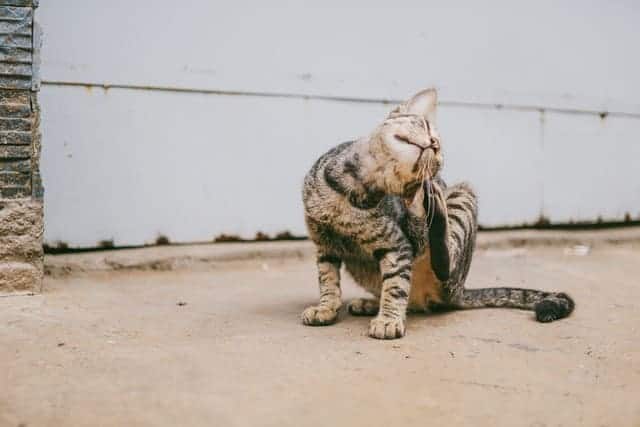
In order to understand how to proceed with the treatment, it will be necessary to first obtain a diagnosis, which only the veterinarian can provide us. Through the gold standard, i.e. the reference method for confirming dermatophytosis, the culture on Sabouraud soil of hairs or scales collected from the lesions.
While they are less sensitive techniques, the examination with Wood’s lamp and the microscopic detection of arthrospores on the hairs, which will appear thicker and with a wrinkled and irregular surface. All this serves to understand if it is really dermatophytosis in the cat and which fungus is causing it, before being able to proceed with the appropriate therapy.
Once the diagnosis has been established, the veterinarian will proceed with the treatment, which consists of two types:
- topical therapy, which consists in the application twice a week of solutions based on enilconazole or miconazole possibly associated with chlorhexidine, better after shearing the cat, in this way the spores will be eliminated from the coat and will also help to hasten the healing.
- The second method of treating dermatophytosis in cats is systemic therapy, through a fungicide administered orally, paired with the application of lotions, creams, foams and cat hygiene products. Most of what your veterinarian prescribes is itraconazole or terbinafine for at least 10 weeks. Throughout the period of treatment the cat must be isolated to avoid contagion, it will be necessary to keep the environment clean and use gloves to avoid direct contact with the animal. In addition, it will be necessary to carry out checks with a certain frequency until the definitive elimination of the disease from the cat and the spores from the surrounding environment. Nutrition can also play a considerable and supportive function, especially to promote the well-being of the skin and the regrowth of a healthy hair.

